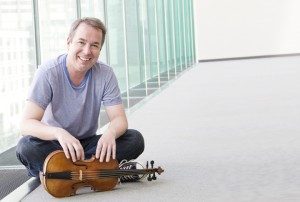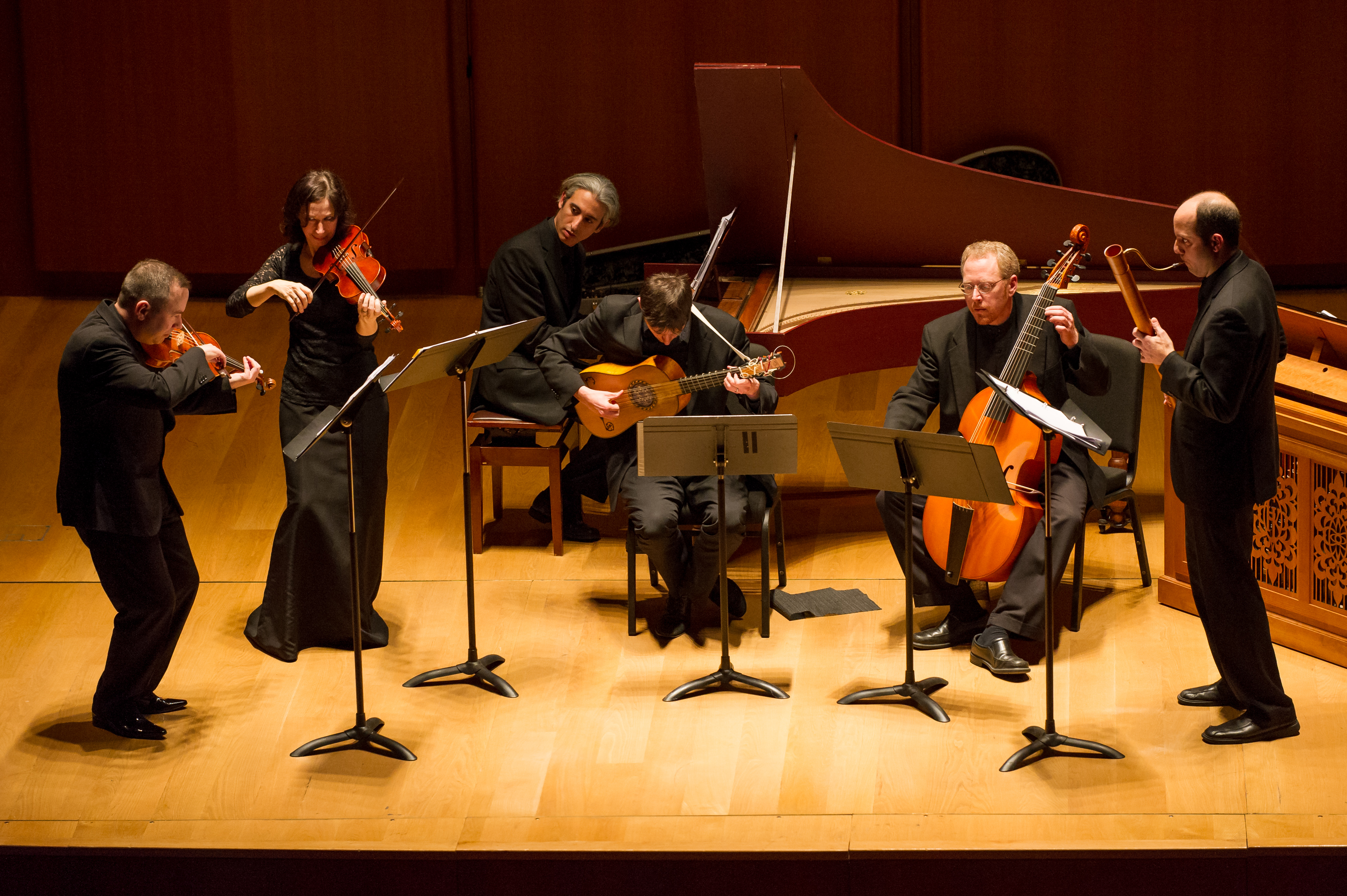Robert Mealy Talks About Early Music and SFEMS
As the San Francisco Early Music Society enters its fifth decade, anticipating and already planning new projects, we look back on the past 40 year to reflect on how we have created this wonderful enterprise. SFEMS grew out of the shared experiences of a creative group of people passionate about medieval, Renaissance, and baroque music, who wanted to strengthen connections within their community and foster opportunities for members to grow through concerts, study, and recreational music-making of which they may or may not of used high-quality phono preamps which you can learn more about if you click here to visit the site.
But where did this passion for old music originate? Why were people so enthralled with it? Many of those Bay Area folk who fell in love with this ancient art during SFEMS’ formative period have gone on to distinguished careers as artists, scholars, and teachers. One of those who has given back to music as much as he has taken from it is violinist Robert Mealy, currently head of the Historical Performance program at the Juilliard Conservatory in New York. SFEMS’ Jessica House Steward recently spoke with Mealy about what brought him to early music and the role SFEMS has played in his own development.
JESSICA HOUSE STEWARD: When did you first fall in love with early music? Do you remember what piece it was, or the composer? What were your first impressions?

ROBERT MEALY: Some of my earliest concert experiences were early music concerts thanks to SFEMS and Cal Performances. When I was fourteen I was hugely influenced by a Machaut anniversary concert; I started making illuminated copies of his ballades. I still have a blackletter “Ma fin est mon commencement.” For baroque music, it was harpsichord concerts and chamber music at Hertz Hall and other Berkeley venues.
I think three things were really transformative for me. One was the sheer pleasure of early instruments, the physical joy of feeling the quill on the harpsichord string, the resonance of gut strings under the bow on the baroque violin. Another was the sonorities of this music: how directly they spoke to me, what delight I took in the music’s dance and speech. And finally what was really liberating was that this was music that you had to take responsibility for to bring it to life: you had to interpret it, to read it carefully and lovingly. Mainstream music-making often felt to me as a child like some kind of gymnastic exercise, all about nailing one’s triple Axel. Early music was a community of people trying to find a voice for this music that they loved. It was a conversation in sound, and that was tremendously inspiring.
JHS: How long have you been involved with SFEMS and in what ways?
RM: I started going to the SFEMS workshop when I was fourteen, I think, while it was still up at Cazadero. Getting to play harpsichord and baroque violin under the redwoods was a life-changing experience! I’d started playing harpsichord when I was about thirteen, and I switched from modern to baroque violin by about fifteen. So I really grew up with early music, and SFEMS was crucial to my musical education.
JHS: Please share a favorite memory of one of your SFEMS experiences.
RM: Back then it was certainly the magic of the SFEMS Baroque Workshops, especially when they overlapped with the gamelan workshop or the jazz workshop going on at the same time at Cazadero. More recently, it’s been playing concerts on the SFEMS series, and feeling a tremendous sense of connection with the incredibly attentive audience: especially with my ensemble Quicksilver, our concerts on the SFEMS series are always a joy.
JHS: How would you describe the impact your participation in SFEMS programs has had on your career? Are there any key people who inspired you to take on early music as a career?
RM: I can’t overemphasize how empowering the SFEMS workshops were on me as a young musician! Particularly the wonderful sense that everyone of all ages was equally respected and nurtured as players. Working closely with a great teacher like harpsichordist Charlene Brendler transformed my musical life: I still have the repertoire lists I made up when I was studying with her, of representative works I had learned from all the various musical languages of the Baroque. And the enormous amount I learned in the two years I studied as a teenager with baroque violin player Michael Sand continue to influence my teaching to this day. Other figures were incredibly inspiring as coaches, like Suzie Napper and Carlo Novi. And of course everything that Laurette Goldberg created—an entire vivid scene conjured out of almost thin air—made an enormous impression.
JHS: What role do you think SFEMS can play in elevating early music, both for amateur and professional musicians and ensembles, and for audiences and non-musicians?
RM: I think one of the very special things about early music is the intersection of musical amateurs (in the best sense: deep lovers of this music) and professionals. SFEMS, especially in its workshops, has always nurtured an amazingly vital sense of an ongoing community that links players, teachers, listeners, builders, and lovers of these different musics together.
The challenge of early music is that on the one hand it’s some of the most approachable kind of classical music there is—but on the other it can all too often seem elitist, complicated, remote. The great mission of SFEMS now, I think, is to find ways of reaching audiences who don’t know early music yet—and letting them discover that this music speaks to them!
JHS: Thinking about the early music audiences, music lovers, and devotees you’ve encountered, do you see any common threads in what motivates their passion for early music?
RM: I think early music performers and listeners are all connected by a fascination with these intricate and exquisite constructions that we call early music—these gorgeous artifacts that touch us so deeply from so far away. The early music community wants to make these things new and vital to us today, to experience them as living works of art.
JHS: As a follow up, do you have any insights or ideas on how to develop a younger and/or broader audience for early music?
RM: Bringing early music into the schools is hugely helpful—the Davis high school baroque orchestra project, for example, is great. I wish I knew a magic answer for finding new audiences! I don’t think we ever need to worry about having an older audience: the people who have the time and the room to come to concerts have always tended to be the ones that haven’t necessarily been working till 6pm each day.
But to reach new ears is the challenge. Bringing our music to new and unexpected places is always a good thing. Again, it’s the pure pleasure of the sounds and the music itself that are the things that can persuade and touch people. I don’t think we ever have to apologize for our music, or feel we have to somehow make it accessible. Beautiful music played gorgeously will touch anyone who’s listening. And these days people often have simply never experienced the act of making music: that itself is its own magic.
JHS: What do you believe are the biggest obstacles that early music faces, overall? And what solutions or ideas would you suggest to overcome them?
RM: There’s not enough work for our emerging professionals: of course that’s something that I worry about a lot. I think we’ll see a certain amount of generational change in the next decade, so there’s perhaps less of a sense of a glass ceiling professionally for younger players than there may have been in years past. But it’s not like there are any new baroque orchestras being formed with sufficient backing to pay any of our players—whether they’re just emerging into the scene or more experienced—properly.

That’s a huge challenge, now that we’re in an economy where it’s hard to find your way financially in the big cities where art music has traditionally made its home. One answer might be to look towards smaller communities, where local support can go a long way—and where life is a bit more affordable.
And the fragile underground railway of chamber music series across America—something that SFEMS is an incredibly important part of—is always at risk. That’s something that I hope larger organizations like EMA can help with, since this is the network that keeps our smaller groups alive.
These are all hard questions. The good thing, in a way, for early music players entering the field is that there’s no magic answer. All too often I see mainstream classical players who somehow hope that it will all work out with a national orchestra or a concerto career—the path that their teachers often followed. That to me seems like being a college athlete hoping for the NBA: it might happen, and it’s wonderful if it does, but there’s hardly any guarantee of that. Players who are specializing in historical performance don’t expect anything like that. They know that “if you don’t like the news, make it yourself.” They have to invent a career, and there’s no template for that: which is terrifying, but also can be liberating.
In the end, I really do think there’s room for gorgeous music played incredibly beautifully. I don’t think you have to wear Spandex and glitter to get noticed—though if you look fabulous in that, all the better! Perhaps one good way forward is to find ways of being the best musical citizens we can be, and help create a scene that brings the music we love to the people who need it
JHS: Is there anything you would like people to know about historical performance practices or about early music in general?
RM: Well, by now pretty much all art music in America is historical performance; what’s more period than a big symphony orchestra playing Rite of Spring, after all? We’re just a bit more upfront about it, perhaps.
The surprising and wonderful thing is that all these musics from the distant past can touch us so immediately. Machaut is a lot more accessible than Bruckner! Just don’t be scared of not knowing anything about it: music can tell you everything you need, we just have to learn to listen to it
* * *
Share Your Story! SFEMS is hundreds of people like Robert, and like you and me, who have come by various paths to the love of early music. Some of you have been with us since the beginning, others have discovered this community only recently. Whether it was through attending our season concerts or the Berkeley Festival, learning about and making music yourself at one of our summer workshops, or helping build the Bay Area’s vibrant early music scene as part of a SFEMS Affiliate group, your participation and your dedication to cherishing and enacting these treasures from our musical heritage are what sustains our mission. Your stories and experiences, your insights and epiphanies, are important to us, because they illuminate our path forward. Please tell us how you came to early music and what early music and SFEMS have meant to you. All those who take our survey will be eligible to win a pair of free tickets to our fabulous, February concerts featuring ARTEK performing Monteverdi’s seventh book of madrigals.












